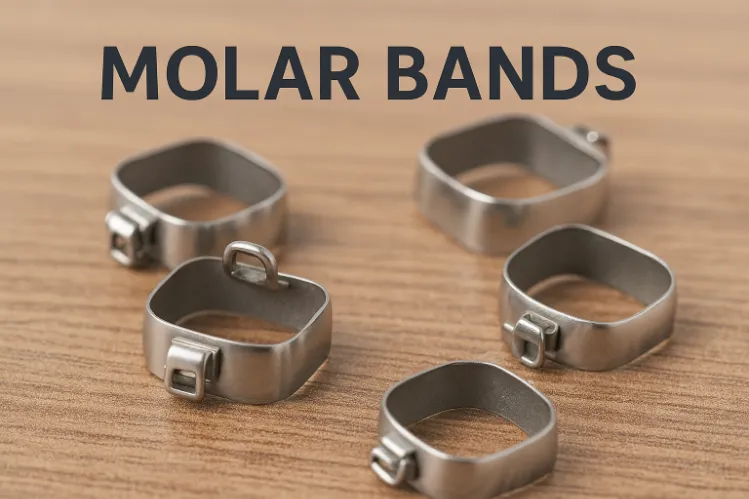
Modern-day orthodontic solutions such as braces, clear aligners, and retainers have transformed the way people achieve straight teeth. But the true impact of straightened teeth goes beyond just appearances. It affects self-confidence, social interactions, and how others perceive you.
In today’s blog, we’ll explore the psychological benefits of straightened teeth, their influence on social connections, and why a straight smile could be the key to unlocking invisible confidence in your everyday life.
At their core, straightened teeth are more than just a cosmetic upgrade. They can be life-changing for people struggling with insecurities about their smiles. By achieving straighter teeth, individuals often experience higher self-esteem, which impacts various areas of their lives, from personal relationships to career success.
Teeth are one of the most noticeable features of a person’s face. When people have crooked or misaligned teeth, they may feel self-conscious about smiling or speaking. Over time, this can cause social withdrawal and avoidance of public interactions.
By straightening their teeth, people can regain their confidence and feel more comfortable with their appearance. They no longer have to cover their mouths when laughing or avoid smiling for photos. This shift in self-perception often results in improved mental well-being and higher self-esteem.
Mental health is closely tied to how people perceive themselves. Crooked or misaligned teeth can make individuals feel insecure, which can affect their overall mood. Straightened teeth allow people to feel more in control of their image, leading to better mental well-being.
The change isn’t just about the physical results. People feel proud of the journey they’ve gone through to achieve straight teeth, which can make them feel more resilient. This newfound strength can encourage them to face other life challenges with greater determination.
Read our detailed blog on Fastest Teeth Straightening Options Explained

When people feel more confident, it naturally affects the way they engage with others. Straightened teeth can help people project an image of warmth, friendliness, and approachability. The social benefits of a straight smile extend to personal relationships, work-related interactions, and everyday social encounters.
First impressions are often made within seconds, and a smile is one of the first things people notice. Crooked teeth can make people feel reluctant to smile, which may come across as distant or unfriendly. Straightened teeth, however, encourage people to smile more, giving off a positive, approachable vibe.
When people smile with confidence, they seem more self-assured, competent, and trustworthy. This is why a straight smile can be a game-changer in settings like job interviews, business meetings, and social events.
Human beings are naturally drawn to people who exhibit warmth and friendliness. A confident smile can make it easier to build strong social connections. People with straight teeth are more likely to feel at ease during social interactions, allowing them to engage more comfortably with family, friends, and new acquaintances.
When people feel confident with their smiles, they are more likely to start conversations, make eye contact, and connect with others on a deeper level. This can have lasting effects on relationships, friendships, and professional networks.
Non-verbal communication plays a major role in human interaction, and a smile is one of the most powerful non-verbal cues. A smile can convey warmth, friendliness, and approachability in just a few seconds. But when people feel insecure about their teeth, they may be less likely to smile naturally, which can impact the way others perceive them.
First impressions are formed within seconds, and studies show that a smile plays a key role in shaping those impressions. People with straight teeth are often perceived as:
This effect can be seen in social, professional, and even digital interactions, such as video calls. When people feel confident in their smile, they’re more likely to engage with others and leave a lasting positive impression. This is especially important in job interviews, business networking, and social events where first impressions matter most.
Trust is one of the most valuable elements in relationships, and a smile can significantly impact how people perceive trustworthiness. A smile with straight teeth signals confidence, sincerity, and openness, which helps build trust more quickly.
Here’s why straight teeth help build trust:
People with straight teeth are seen as more genuine, which can lead to stronger personal and professional relationships. In contrast, people with crooked teeth may feel self-conscious, which can result in less frequent smiling. This difference in behavior can influence how others perceive their intentions or character.
Confidence is often linked to success in social and professional environments. People who smile frequently are perceived as confident and self-assured. Straightened teeth make it easier for individuals to smile naturally, reducing the fear of judgment from others.
When people exude confidence, they tend to attract positive attention, make stronger connections, and increase their influence in social circles. Here’s how a confident smile can lead to success:
Find Your Options: Teeth Straightening Near Me: UK Directory

A confident smile has become an essential part of professional success. In today’s competitive job market, people with straight teeth are often perceived as more competent, approachable, and professional. These subtle but powerful judgments can impact hiring decisions, promotions, and overall career progression.
When candidates walk into a job interview, their smile is often one of the first things interviewers notice. People with straight teeth are more likely to smile confidently, which sends a positive signal to potential employers. Candidates who project confidence and approachability are often seen as better fits for roles that require leadership, teamwork, or client-facing interactions.
Here’s how a confident smile influences hiring decisions:In contrast, candidates with crooked teeth may avoid smiling during interviews due to insecurities. This can make them appear nervous, withdrawn, or less enthusiastic. While skills and experience remain crucial factors in hiring decisions, first impressions also play a significant role.
Leadership roles often require individuals to command attention, exude authority, and inspire trust. People in leadership positions are expected to engage with employees, clients, and stakeholders with confidence and clarity. A straight smile makes it easier for leaders to maintain eye contact, smile during speeches, and project authority in a positive way.
Leaders with straight teeth benefit from:When leaders have straight teeth, their presence appears stronger, and their words seem more sincere. This is because people naturally associate straight smiles with trust, honesty, and competence. Leaders with crooked teeth, on the other hand, may feel hesitant to smile in front of large groups, which can impact how effectively they communicate their message.
In careers where face-to-face interactions are common, such as sales, customer service, and hospitality, first impressions are crucial. People with straight teeth have an advantage in these roles because they are more likely to greet clients with a warm, confident smile. This friendly demeanor can increase customer satisfaction and boost sales success.
Here’s how a straight smile benefits client-facing roles:Clients are more likely to feel comfortable with people who smile frequently, as it creates a sense of approachability. This is why professionals working in roles that require frequent customer interaction often invest in orthodontic treatments to improve their smiles. A warm, confident smile can be the difference between making a sale and losing a client.
As social media, video calls, and online interactions continue to grow, the impact of straight teeth on digital presence has become more significant. Whether it’s posting selfies, attending video meetings, or sharing videos online, a straight smile can increase confidence and enhance social visibility.
Social media platforms are heavily image-driven, with millions of users sharing selfies, photos, and videos every day. People with straight teeth are more likely to share smiling selfies, as they feel confident in their appearance. This increased visibility can lead to higher engagement, more positive comments, and a stronger social presence.
Here’s how straight teeth boost social media visibility:On the other hand, people with crooked teeth may avoid taking selfies or feel hesitant to post pictures that show their teeth. This can impact their confidence in online interactions and reduce their visibility on platforms where appearance matters.

With the rise of remote work and virtual meetings, more people are appearing on screen for video calls. During these calls, body language and facial expressions play a vital role in effective communication. People with straight teeth are more likely to smile and appear confident on screen, making them more engaging and approachable.
Professionals who are confident in their smiles are more likely to speak up during virtual meetings, contribute to discussions, and take on leadership roles. This visibility can lead to greater recognition from managers, increased opportunities for promotions, and a stronger professional reputation.
Straightened teeth are more than just an aesthetic upgrade. They play a powerful role in shaping self-esteem, social perception, and professional success. From building confidence to enhancing social interactions and improving digital presence, the benefits of a straight smile are undeniable.
A confident smile has the ability to break down barriers, open up new opportunities, and leave lasting impressions. It influences how people perceive you in social, professional, and online spaces, making straight teeth a valuable asset in modern society.




Curated the best for your knowledge
.png) Metallic Taste in Mouth: Causes and How to Get Rid of It
Metallic Taste in Mouth: Causes and How to Get Rid of ItHaving metal taste in the mouth first thing in the morning can be an unexpected experience. You wake up, take a swallow, and suddenly have a metallic taste in your mouth, as if you'd been chewing on a handful of change. It's annoying, a little scary, and sometimes for no apparent reason. For some people, it will be nothing but a minor nuisance; others may fall into the late-night goose chaser. Sometimes it's a sign that there is something wrong with your braces; other times, it could mean that there is something wrong with one of your teeth. But here's the good news: Most metallic tastes are temporary, harmless, and can be treated or resolved. So let's take a closer look at the possibilities.
Read More How Molar Bands Work in Braces and Retainers to Keep Your Teeth in Line
How Molar Bands Work in Braces and Retainers to Keep Your Teeth in LineIf you’ve ever started orthodontic treatment, you already know there are a lot of tiny pieces involved. Wires, brackets, elastics, retainers, attachments… and then there are molar bands. They’re not as famous as braces themselves, but they play a surprisingly big role in keeping your smile moving in the right direction. Some people don’t really notice them. While others desperately want to know why that metal ring is even there. So let’s break it all down: what molar bands are, why orthodontists use them, and how they work in both braces and retainers. Plus, what you should expect throughout the process.
Read More.webp) Dental Bonding Cost: Prices, Process & What to Know
Dental Bonding Cost: Prices, Process & What to KnowIf you’re thinking about fixing a chipped tooth, closing a gap, or smoothing out uneven edges, dental bonding is often the easiest (and quickest) way to do it. And honestly? It’s one of the most budget-friendly cosmetic treatments out there, if you know what to expect. But here’s the part everyone worries about first: “How much does tooth bonding cost?” The short answer: it depends. The long answer: let’s break it all down so you actually understand where the price comes from, what you’re paying for, and whether bonding is the right fix for your smile.
Read MoreQuick Links

Heading